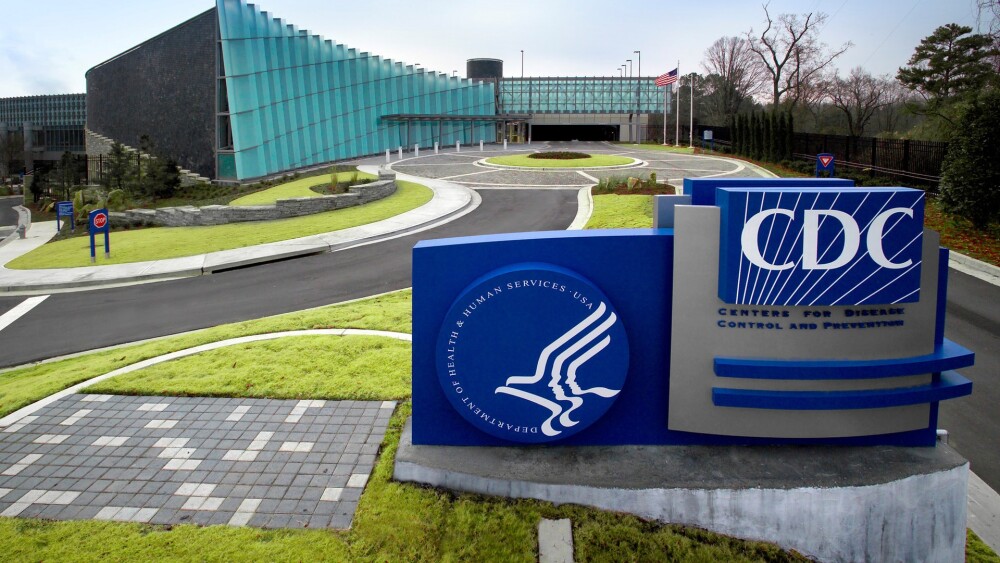Morgan had determined that adding one dose of the Moderna or Pfizer-BioNTech mRNA vaccine to one of Oxford-AstraZeneca’s viral vector technology would equal stronger immunity.
Vaccitech CEO, Bill Enright/Photo Courtesy of Bill Enright
Last month, news broke that some with insider knowledge of the pharmacology were switching it up in order to get what they believe is superior protection.
The concept, called heterologous prime boosting, appealed to Vaccitech Plc and Univercells SA board member Pierre Morgon, who went as far as to cross the border from his home in Lausanne, Switzerland to Lyon, France to gain access to the Oxford-AstraZeneca shot.
Morgan had determined that adding one dose of the Moderna or Pfizer-BioNTech messenger RNA (mRNA) vaccine to one of Oxford-AstraZeneca’s viral vector technology would equal stronger immunity.
“If you prime the immune system with a certain technology, you get a broader, higher and more lasting response if you boost with something aiming at the same target but based on a different technology,” Morgan told Bloomberg in June.
Bill Enright, the company’s Maryland-based CEO, enlisted the help of the Janssen Pharmaceutical (Johnson & Johnson) vaccine to boost his immunity chances. The Oxford-AstraZeneca shot has yet to be approved in the United States.
Vaccitech’s patented adenovirus vector, chimpanzee adenovirus Oxford 1 (ChAdOx1), is the technological platform behind the Oxford-AstraZeneca vaccine. It is also based on a heterologous approach.
“Our platform technology is a heterologous prime-boost where we’re priming the immune system with an adenovirus and then boosting with a different virus, so we know that that works really well to induce a very broad, robust immune response,” Enright said. “So it wasn’t too much of a leap to go from that heterologous prime boost to a heterologous prime boost with an adenovirus followed by an RNA.”
It’s a practice that has been adopted by governments around the world. Right next door, the Canadian government has given its official stamp of approval for mixing the two different technologies.
On June 4, Ontario updated its guidance to allow those individuals who received a first Oxford-AstraZeneca shot to book a second jab of either the same vaccine or an mRNA shot. On June 17, Canada’s National Advisory Committee on Immunization (NACI) recommended that provinces stop administering the AstraZeneca shots in most situations.
“An mRNA vaccine is now preferred as the second dose for individuals who received a first dose of the AstraZeneca/COVISHIELD vaccine, based on emerging evidence of a potentially better immune response from this mixed vaccine schedule,” NACI said in a statement.
On May 19, Spain announced that it would allow people under 60 who received Oxford-AstraZeneca as their first shot to instead elect to boost it with the Pfizer vaccine. The guidance was issued after the government’s Carlos III Health Institute found this to be both safe and effective.
In many cases, the authorization was given due to concerns around particularly the Oxford-AstraZeneca vaccine, but real-world evidence is emerging demonstrating that the approach has merit.
The University of Oxford recently published the first results from its Com-COV study assessing different COVID-19 vaccine combinations and schedules. The data showed that mixed schedules involving the Pfizer-BioNTech and Oxford-AstraZeneca vaccines given four weeks apart generated a robust immune response.
While both schedules, Oxford-AstraZeneca followed by Pfizer-BioNTech and the reverse, induced high concentrations of antibodies against the SARS-CoV2 spike IgG protein, the viral vector followed by the mRNA shot generated the best response. Notably, this also generated the highest T cell response.
“The results show that when given at a four-week interval, both mixed schedules induce an immune response that is above the threshold set by the standard schedule of the Oxford/AstraZeneca vaccine,” said Professor Matthew Snape, associate professor in paediatrics and vaccinology at Oxford, and the trial’s chief investigator.
There are some concerns about more severe side effects with mixed schedules. Previous data from the Com-COV trial showed more frequent mild-to-moderate reactions with the combo doses, but these were short-lived in nature.
One key benefit of a heterologous approach is that it enables the immune system to respond against a much broader section of the spike protein – the pointy part of the SARS-CoV-2 virus that allows it to invade human cells. This means that companies developing the second round of vaccines for COVID-19, like Heat Biologics, still have the potential to play a big role in ending the pandemic.
Heat’s ZVX-60 vaccine, which leverages the company’s proprietary gp96 platform, has been designed to include multiple protein regions of the virus. It also has the benefit of activating the body’s T cell immune response.
“With COVID-19, there’s a lot of data coming out that show that you really need both. You really need a robust antibody response and T cell response to really generate good prophylactic protection against COVID-19, as well as the new variants that are emerging,” said Heat founder and CEO, Jeff Wolf.
Wolf envisions ZVX-60 as either a stand-alone vaccine or a complement to an existing one.
“If [someone] has the existing Pfizer vaccine, they’ve already generated an antibody response, so it has the potential to provide really a different type of prophylactic coverage to the patient with T cells,” Wolf said. “So you’re not just boosting the existing antibody response, and you’re not doing it against a small region. You’re providing an entirely different mechanism of action to complement the antibody response that the patient has already generated with the existing vaccines.”
San Francisco-based Vaxart Inc. is developing one of the most unique vaccines on the market – a room-temperature stable oral tablet that, if effective, could make a significant impact in the developing world.
“Once you get outside of the U.S. and Europe, most countries don’t have the infrastructure to keep the mRNA vaccines cold enough or enough people to administer needle injections,” explained Vaxart Founder and Chief Scientific Officer, Sean Tucker, Ph.D.
Tucker added that the vaccine’s specific immune profile, which elicits nasal IgA and systemic T cells, would make it a good candidate to alleviate logistical challenges in a heterologous manner.
“Because of the immune profile, Vaxart’s oral tablet vaccine would complement the injected vaccines quite well and may provide better protection against future variants. Also, it’s a lot easier to hand out or mail tablets, so boosting with a tablet would be a better solution than repeated injections every 6-12 months,” he said.
According to preliminary Phase I data released in February, the experimental vaccine was well-tolerated and generated an immunogenic response.
Time and real world data will tell, of course, but when it comes to the pandemic that has shaken a generation, it would seem that an all-hands-on-deck approach would be advised.






